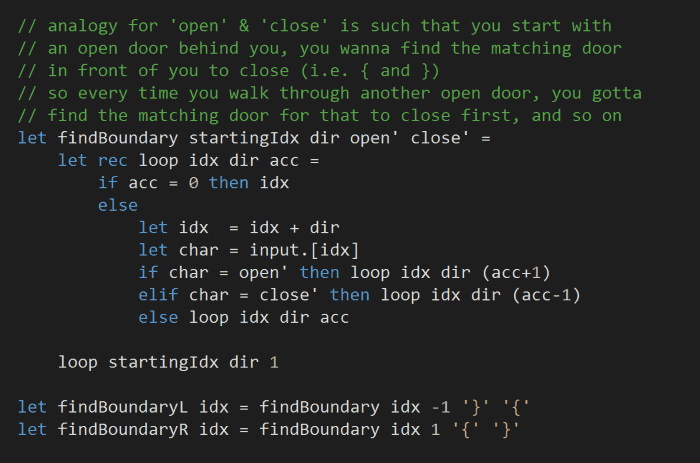
Yan Cui
I help clients go faster for less using serverless technologies.
This article is brought to you by
Hookdeck: The Serverless Event Gateway
Hookdeck is a reliable and scalable serverless event gateway for sending, receiving, authenticating, transforming, filtering, and routing events between services in your event-driven architecture.
The source code for this post (both Part 1 and Part 2) is available here and you can click here to see my solutions for the other Advent of Code challenges.
Description for today’s challenge is here.
With the way Part 1 is phrased, it means we don’t actually have to understand the JSON document itself – we can cheat by regex out all the numbers and simply add them up! ![]()

Part 2
This part is slightly more challenging, but even so we still don’t necessarily have to understand the JSON document – we just need to find the scope of the object (as defined by matched { and }) that has a property value “red”.
So let’s define two functions – findBoundaryL and findBoundaryR – that can find the left (the open { ) and right (the closing } ) boundaries of the object that has a “red” property (as determined by the starting index):

The logic for findBoundary is perhaps slightly convoluted/abstract, so let’s go through it:
- given some direction (+/- 1) that we’re traversing through the input, and starting with 1 open door behind us;
- if we saw an open door, then recurse by incrementing the accumulated number of open doors by 1
- if we saw a closed door, then recurse by decrementing the accumulated number of open doors by 1
- otherwise, just recurse with the current number of open doors
- when the accumulated number of open doors is down to 0, it means we’ve managed to close all the open doors behind us, and therefore discovered the index of the close door that matches the initial open door
For example, if “red” is at index 102, and we’re trying to find the closing } for the object, then starting from 102, we’ll iterate through the chars to the right of 102:
…:”red”, “b”:{“c”:42,”d”:”42″},”e”:8},…
starting with index = 102, acc = 1
…
index = 113, saw ‘{‘, acc incremented to 2
…
index = 129, saw ‘}’, acc decremented to 1
…
index = 136, saw ‘}’, acc decremented to 0
acc = 0, right boundary is at index 136
repeat the same process in reverse to find the position of the opening { for this object.
Now we can find the boundaries of objects that has a “red” property:

and use this information to filter out numbers that are part of any of these objects (i.e. the number is inside any of these boundaries):

Whenever you’re ready, here are 4 ways I can help you:
- Production-Ready Serverless: Join 20+ AWS Heroes & Community Builders and 1000+ other students in levelling up your serverless game. This is your one-stop shop for quickly levelling up your serverless skills.
- Do you want to know how to test serverless architectures with a fast dev & test loop? Check out my latest course, Testing Serverless Architectures and learn the smart way to test serverless.
- I help clients launch product ideas, improve their development processes and upskill their teams. If you’d like to work together, then let’s get in touch.
- Join my community on Discord, ask questions, and join the discussion on all things AWS and Serverless.
Pingback: F# Weekly #52, 2015 | Sergey Tihon's Blog